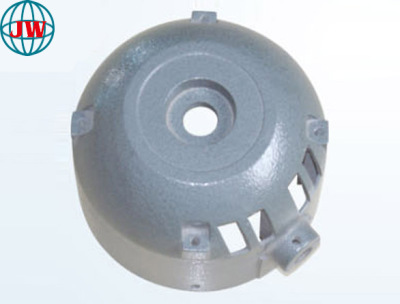
Tecnología de fundición a presión: inversión en investigación y desarrollo para el crecimiento futuro
2025-03-25 15:52
In the highly competitive landscape of modern manufacturing, die -casting technology stands as a cornerstone for producing high-quality components across a wide array of industries. Recognizing its potential for further growth and innovation, companies and research institutions around the world are increasingly investing in research and development (R&D) related to die - casting.
Die-casting is a manufacturing process where molten metal, typically aluminum, zinc, or magnesium alloys, is forced under high pressure into a mold cavity. This process allows for the creation of complex, precise, and detailed parts with high production rates. However, to keep up with the ever -evolving demands of industries such as automotive, aerospace, and consumer electronics, continuous R&D efforts are essential.
One of the key areas of R&D investment in die-casting technology is materials research. Scientists and engineers are constantly exploring new alloys and composite materials to enhance the performance of die-cast parts. For example, in the automotive industry, there is a growing demand for lightweight yet strong components to improve fuel efficiency and reduce emissions. New aluminum-based alloys with enhanced mechanical properties are being developed through R&D. These alloys can withstand higher temperatures and pressures, making them suitable for use in engine components and structural parts. In the aerospace sector, research is focused on developing magnesium - based alloys that offer an even better strength - to - weight ratio, which is crucial for reducing the weight of aircraft and improving their performance.
Another significant aspect of R&D in die-casting is process optimization. Advanced simulation techniques are being utilized to better understand the die - casting process and predict potential defects. Computer - aided engineering (CAE) software allows engineers to simulate the flow of molten metal within the mold, the cooling process, and the formation of internal stresses. By analyzing these simulations, they can optimize the design of the mold, the gating system (the channels through which the molten metal enters the mold), and the process parameters such as pressure, temperature, and cooling rate. This not only reduces the number of trial - and - error attempts during production but also leads to higher - quality parts with fewer defects. For instance, through process optimization, manufacturers can reduce the occurrence of porosity in die-cast parts, which can significantly improve their mechanical properties and reliability.
The development of new die-casting equipment and machinery is also a major focus of R&D. Companies are investing in research to design more energy - efficient and high- precision die-casting machines. Newer machines are being equipped with advanced control systems that can precisely regulate the injection pressure, speed, and other parameters during the die-casting process. This level of control enables the production of more complex and accurate parts. Additionally, efforts are being made to develop machines that can handle a wider range of materials and larger part sizes. In the consumer electronics industry, where there is a need for small, intricate die-cast components, new machines are being designed to meet these specific requirements with high precision and efficiency.
R&D in die-casting technology also extends to environmental sustainability. As the global focus on reducing carbon emissions and minimizing waste grows, the die- casting industry is looking for ways to make its processes more eco - friendly. Research is being conducted to develop recycling methods for die-cast materials, as well as to optimize the energy consumption of die-casting machines. For example, some companies are exploring the use of waste heat recovery systems in die-casting plants to reuse the heat generated during the process, thereby reducing overall energy consumption.
The impact of these R&D investments on the future growth of the die-casting industry is profound. By developing new materials, optimizing processes, and creating more advanced equipment, die-casting technology will be able to meet the increasingly stringent demands of various industries. This, in turn, will open up new market opportunities for die-casting manufacturers. For example, as the automotive industry transitions towards electric vehicles, die-casting technology will play a crucial role in producing components for electric motors, battery enclosures, and other key parts. The ability to produce high - quality, lightweight components through die-casting will be a competitive advantage in this emerging market.
In conclusion, the investment in research and development for die-casting technology is not only essential for the continued growth and competitiveness of the die-casting industry but also for enabling it to support the development of other key industries. As R&D efforts continue to yield new innovations, the future of die-casting technology looks promising, with the potential to revolutionize manufacturing processes and drive economic growth
Obtenga el último precio? Le responderemos lo antes posible (dentro de las 12 horas)












